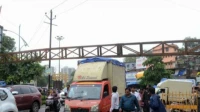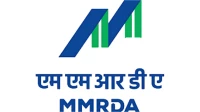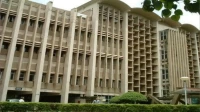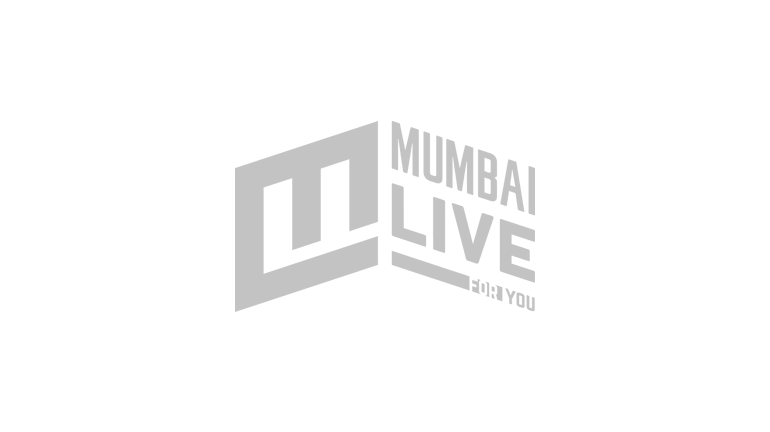Amidst the coronavirus outbreak across the world, several departments are trying to ensure some clarity for the future. With the currently increasing COVID-19+ cases in India, the government along with many healthcare officials are working hard to keep the cases under control, thereby treating them to the best possibility.
A recently released report (now controversial and contested) by America's Johns Hopkins University and Center for Diseases Dynamics, Economic and Policy (CDDEP) claims numbers, that forced most people to hit the panic button.
CDDEP has issued a statement regarding the same starting, "We would like to clarify that the new report is co-authored by faculty at Johns Hopkins School of Public Health. The report uses strong scientific modelling based on available data and clear assumptions. An earlier version of the report did not have the correct logo of Princeton University and therefore needed to be corrected. The updated logo has now been placed on the report and the work was indeed done at Princeton. As with all research, the report does not reflect any official position of the institutions involved. This is as per the clarifications issued by both JHSPH and Princeton on the report."
At the time of filing this story, it was carried out by most publications including Mumbai Live as it was based on a report published by a credible name. However, now John Hopkins University has now denied associating for this report and has even got out to release a statement on Twitter.
The recent tweet by John Hopkins said, "To clarify: Faculty with appointments at @JohnsHopkinsSPH co-authored this report with @CDDEP and Princeton researchers. The report has been updated to clarify its authors affiliations and does not reflect the views of CDDEP, Johns Hopkins, or Princeton."
The International Health department further added, "New report co-authored by faculty w/ appointments at @JohnsHopkinsSPH uses strong scientific modelling based on available data & clear assumptions to help inform the #Covid19 response in India. Note: Its findings do not reflect the views of @JohnsHopkins"
To clarify: Faculty with appointments at @JohnsHopkinsSPH co-authored this report with @CDDEP and Princeton researchers. The report has been updated to clarify its authors affiliations and does not reflect the views of CDDEP, Johns Hopkins, or Princeton.https://t.co/QrFhRDq1Fs
— Johns Hopkins University (@JohnsHopkins) March 28, 2020
Further, the report starts with a disclaimer that read, "Our COVID-19 modeling estimates for India were produced by a team of researchers affiliated with CDDEP, Johns Hopkins, and Princeton. This work does not reflect the views of CDDEP, Johns Hopkins University or Princeton University."
The team which worked on the report includes
- Eili Klein (Assistant Professor, Department of Emergency Medicine, Johns Hopkins School of Medicine)
- Gary Lin (Post-doctoral fellow, Department of Emergency Medicine, Johns Hopkins School of Medicine)
- Katie Tseng (CDDEP)
- Emily Schueller (CDDEP)
- Geetanjali Kapoor (CDDEP)
- Ramanan Laxminarayan (CDDEP; Senior Associate, Johns Hopkins Bloomberg School of Public Health; Senior Research Scholar, Princeton University)
As per this report, it was mentioned that over 25 million COVID19 cases may be seen in Maharashtra alone and the number of cases in India may see an exponential increase to around 400 million by July 2020. Over the next few months, approximately 100 million may contract the virus.

While the reports state that India has already entered Stage III, the health ministry ruled out the information stating, "We are in stage 2 and we try to find out the patients through contact tracing.
However, this reports, on the contrary mention that India entered Stage-3 early in March and the community transmission has already started in India. The team has estimated the numbers based on the 'IndiaSIM' model and the report states IndiaSIM as "a well-validated agent-based model of the Indian population. This has been published widely over many years and has been used for government decision-making including by NTAGI for vaccine introduction. The model describes the actual Indian population in full detail of demography (age, gender), location, socio-economic characteristics and access to healthcare. Our unit of analysis is an actual simulated Indian and estimates are reliable down to the district level. The model is fitted to the most recently available NFHS and census data and uses state-of-art agent-based modelling methods. We fitted the model to available data from China and Italy. Key parameters include force of infection, age- and gender-specific infection rates, severe infection and case-fatality rates. Seasonality was assumed based on the idea that most respiratory infections decline in the summer and although Covid-19’s temperature and humidity is not well understood, it is reasonable to assume that some characteristics of seasonal influenza apply here."

















